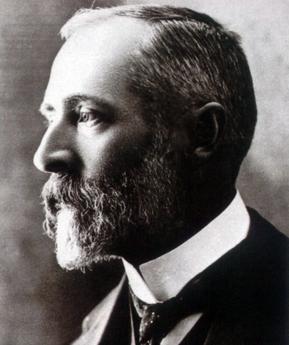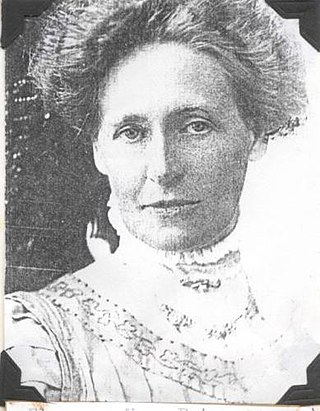Related Research Articles

Kirstenbosch is an important botanical garden nestled at the eastern foot of Table Mountain in Cape Town. The garden is one of 10 National Botanical Gardens covering five of South Africa's six different biomes and administered by the South African National Biodiversity Institute (SANBI). Prior to 1 September 2004, the institute was known as the National Botanical Institute.

Francis Guthrie was a Cape Colony mathematician and botanist who first posed the Four Colour Problem in 1852. He studied mathematics under Augustus De Morgan, and botany under John Lindley at University College London. Guthrie obtained his B.A. in 1850, and LL.B. in 1852 with first class honours. While colouring a map of the counties of England, he noticed that at least four colours were required so that no two regions sharing a common border were the same colour. He postulated that four colours would be sufficient to colour any map. This became known as the Four Color Problem, and remained one of the most famous unsolved problems in graph theory for more than a century until it was eventually proven in 1976 using a lengthy computer-aided proof by Appel and Haken.

Harry Bolus was a South African botanist, botanical artist, businessman and philanthropist. He advanced botany in South Africa by establishing bursaries, founding the Bolus Herbarium and bequeathing his library and a large part of his fortune to the South African College. Active in scientific circles, he was a Fellow of the Linnean Society, member and president of the South African Philosophical Society, the SA Medal and Grant by the SA Association for the Advancement of Science and an honorary D.Sc. from the University of the Cape of Good Hope.

Peter MacOwan was a British colonial botanist and teacher in South Africa.

Ernest Edward Galpin (1858–1941), was a botanist and banker born in the Cape Colony. He left some 16,000 sheets to the National Herbarium in Pretoria and was dubbed "the Prince of Collectors" by General Smuts. Galpin discovered half a dozen genera and many hundreds of new species. Numerous species are named after him such as Acacia galpinii, Bauhinia galpinii, Cyrtanthus galpinii, Kleinia galpinii, Kniphofia galpinii, Streptocarpus galpinii and Watsonia galpinii. He is commemorated in the genus Galpinia N.E.Br. as is his farm in the genus Mosdenia Stent.

Margaret Rutherford Bryan Levyns was an eminent South African phytogeographer, botanist and taxonomist.

The Bolus Herbarium was established in 1865 from a donation by Harry Bolus of his extensive herbarium and library to the South African College, which later became the University of Cape Town.

Edwin Percy Phillips was a South African botanist and taxonomist, noted for his monumental work The Genera of South African Flowering Plants first published in 1926.
Edith Layard Stephens (1884-1966) was a South African botanist, a leading authority on algae and fungi, particularly edible and poisonous mushrooms.

Harriet Margaret Louisa BolusnéeKensit was a South African botanist and taxonomist, and the longtime curator of the Bolus Herbarium, from 1903. Bolus also has the legacy of authoring more land plant species than any other female scientist, in total naming 1,494 species.

Elsie Elizabeth Esterhuysen was a South African botanist. She was described as "the most outstanding collector ever of South African flora", amassing 36,000 herbarium specimens.
Frances Margaret Leighton was a South African botanist and educator. After graduating from Rhodes University with her M.Sc degree in 1931, she worked at the Bolus Herbarium until 1947. Her primary research interests were focused on monocots, and her work impacted the Ornithogalum and Agapanthus.
Gwendoline Joyce Lewis (1909–1967) was a South African botanist.
Lillian Louisa Britten (1886-1952) was a South African botanist considered the leading expert of Eastern Cape flora in her time. Britten studied at Rhodes University College in Grahamstown as a student of Selmar Schonland, and after studying in the UK, returned in 1918 to Grahamstown to be a lecturer in botany at the Rhodes University College. The standard author abbreviation L.L.Britten is used to indicate this person as the author when citing a botanical name.

Dierdré "Dee" Anne Snijman is a South African botanist and plant taxonomist who is notable for studying and writing extensively on bulbs. She has described over 120 species and has written comprehensive works on South African flora. She received the 1997 Herbert Medal from the International Bulb Society for her research on Amaryllis.
Winsome Fanny Barker was a South African botanist and plant collector noted for her work as Curator building the collection at the herbarium of the Kirstenbosch National Botanical Garden, as well as her research on Amaryllidaceae, Liliaceae and Haemodoraceae.

Marguerite Gertrud Anna Henrici was a Swiss-born South African plant physiologist. She is the author of over 80 scientific papers on food value of South African grasses and veld types. She was a member of the South African Association for the Advancement of Science, the South African Biological Society, and an honorary member of the South African Association of Botanist. She is commemorated in the genus names Neohenricia L. Bolus and Salsola henriciae Verd.
Pauline Lesley Perry is a South African botanist, horticulturalist and plant collector.

Florence Mary Paterson, née Hallack, also known as Mrs. T.V. Paterson, was a South African plant collector. Her specimens are kept in the herbarium of Albany Museum and the Bolus Herbarium of the University of Cape Town. She is honored in the plant name patersoniae and genus name Neopatersonia.
References
- 1 2 3 4 "S2A3 Biographical Database of Southern African Science - Pillans, Mr Neville Stuart (botany)". www.s2a3.org.za. Retrieved 4 April 2024.
- ↑ "S2A3 Biographical Database of Southern African Science - Pillans, Mr Charles Eustace (agriculture, horticulture, plant collection)". www.s2a3.org.za. Retrieved 4 April 2024.
- ↑ "Pillans, Neville Stuart (1884-1964) on JSTOR". plants.jstor.org. Retrieved 4 April 2024.
- ↑ International Plant Names Index. Pillans.